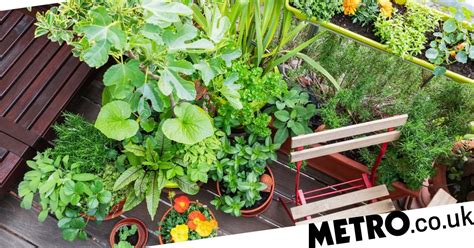Transform Your Balcony into a Wildlife Haven: Urban Gardening for Biodiversity
Urban environments can feel devoid of nature, but your balcony can become a thriving oasis for wildlife. By adopting simple gardening techniques and thoughtful planning, you can contribute to urban biodiversity and create a refuge for local wildlife. This guide provides practical steps and insights on how to make your balcony an inviting space for birds, insects, and small mammals, turning it into a mini ecosystem. Through balcony gardening, not only will you enhance your outdoor beauty, but you’ll also play a role in urban conservation.
Key Concepts of Urban Wildlife and Balcony Gardening
Understanding how urban wildlife interacts with small spaces like balconies is crucial for successful gardening. Key concepts to consider include biodiversity, habitat creation, and species-specific needs. Urban wildlife such as bees, butterflies, birds, and small mammals require specific environments to thrive. By mimicking natural ecosystems through container gardening, you can provide food, shelter, and water sources that support these creatures.
- Biodiversity: Encouraging a variety of plants supports a wider range of species.
- Habitat Creation: Balconies can serve as essential microhabitats in urban landscapes.
- Species-Specific Needs: Consider the needs of local species to provide the right plants and resources.
Historical Context: The Rise of Urban Gardening
Urban gardening has a rich history, often driven by necessity during times of crisis, such as World War II’s victory gardens. However, its modern resurgence is tied to environmental concerns. As cities expand, green spaces dwindle, leading to a sharp decline in urban wildlife. In response, movements advocating for sustainable living and conservation have pushed for the integration of wildlife-friendly spaces, even in densely populated areas.
Historically, balconies were often used for ornamentation, but today, they play a critical role in conservation efforts. Initiatives like urban beekeeping, pollinator corridors, and biodiversity gardens have gained traction as people realize the ecological value of their small outdoor spaces.
Current State Analysis: Urban Wildlife Challenges
Urban wildlife faces significant threats, including habitat loss, pollution, and the scarcity of food sources. Balconies can serve as stepping stones or “wildlife corridors” that connect fragmented habitats, providing much-needed resources to struggling species.
Several studies have shown that even small-scale gardening can positively impact urban wildlife populations. However, there are challenges such as air pollution, limited space, and poor soil quality that gardeners must overcome. With the right strategies, these obstacles can be mitigated.
Practical Applications: Gardening Tips for Urban Wildlife
Creating a wildlife-friendly balcony is a rewarding process, but it requires thoughtful planning and care. Here are some gardening tips to make your balcony a haven for urban wildlife:
- Choose Native Plants: Native plants are adapted to your local climate and provide the best resources for local wildlife.
- Use Container Gardening: Since most balconies lack soil, container gardening is an effective way to introduce a variety of plants.
- Provide Water Sources: A small birdbath or a shallow dish of water can attract birds and insects alike.
- Create Layers: Mimic natural habitats by planting different types of plants at various heights (e.g., hanging baskets, floor pots, and climbing plants).
- Incorporate Shelter: Birdhouses, bee hotels, or simple piles of sticks can offer shelter for wildlife.
Case Studies: Successful Urban Wildlife Balconies
To showcase the real-world impact of wildlife-friendly balconies, let’s look at a few successful examples:
| Location | Size | Wildlife Supported | Key Features |
|---|---|---|---|
| Berlin, Germany | 8 square meters | Birds, bees, and butterflies | Native wildflowers, bee hotels, bird feeders |
| New York City, USA | 5 square meters | Squirrels, sparrows, and bees | Water sources, edible plants, and multi-tiered plant setups |
| Tokyo, Japan | 6 square meters | Butterflies, small birds, and bats | Night-blooming flowers, hanging plants, and insect attractors |
Stakeholder Analysis: Who Benefits from Wildlife-Friendly Balconies?
Creating wildlife-friendly balconies involves multiple stakeholders:
- Gardeners: Experience the personal satisfaction of contributing to conservation efforts and enjoy the beauty of wildlife in their space.
- Urban Wildlife: Benefiting from new habitats and food sources.
- Community: Wildlife-friendly spaces can inspire others and contribute to the overall environmental health of the area.
- City Planners: Encouraging green spaces can contribute to urban sustainability goals.
Implementation Guidelines: Steps to Success
Implementing a wildlife-friendly balcony design requires a balance between aesthetics, functionality, and practicality:
- Plan Your Space: Assess the available space and sunlight exposure before purchasing plants.
- Choose the Right Plants: Select a mix of native species and plants that provide food and shelter for urban wildlife.
- Start Small: Begin with a few plants and gradually expand as you learn what works best in your environment.
- Observe and Adjust: Regularly monitor which species are visiting and tweak your setup to better support their needs.
- Engage with the Community: Share your success stories with neighbors and encourage them to create wildlife-friendly spaces.
Ethical Considerations: Balancing Wildlife with Human Needs
While creating a wildlife-friendly balcony is beneficial, there are ethical considerations to address:
- Harmful Pesticides: Avoid using harmful chemicals that can poison wildlife.
- Invasive Species: Be cautious about introducing non-native species that may disrupt the local ecosystem.
- Human-Wildlife Conflict: Ensure that your balcony setup doesn’t attract wildlife in ways that could cause harm or nuisance to you or your neighbors.
Limitations and Future Research
While balconies offer unique opportunities to support urban wildlife, they also have limitations:
- Space Constraints: Limited space means fewer plant species and restricted wildlife activity.
- Environmental Factors: Urban areas often suffer from air pollution, which can impact the health of plants and wildlife.
- Seasonality: Balconies may only be usable for a portion of the year, depending on climate conditions.
Future research should explore innovative ways to overcome these challenges, such as vertical gardening systems, air filtration techniques for urban pollution, and year-round gardening strategies in colder climates.
Expert Commentary on Urban Gardening for Wildlife
Experts in urban biodiversity emphasize that even small contributions like balcony gardens can make a difference in reversing the trend of declining urban wildlife populations. By integrating gardening techniques that support biodiversity, urban residents can directly impact conservation efforts from the comfort of their homes. Urban gardening for wildlife isn’t just a hobby—it’s a meaningful action that contributes to a healthier environment and fosters coexistence between people and nature.


